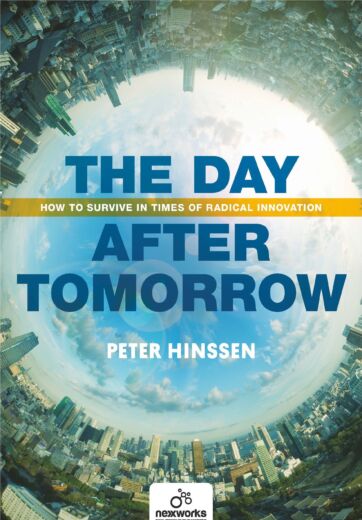People tend to take innovation very seriously. And they should. But on the other hand, they sometimes really shouldn’t be so strict and formal about it either. Let me explain with the fascinating case of Andre Geim, the recipient of the Nobel Prize Physics in 2010 for the discovery of graphene.

Geim is a professor in physics at the University of Manchester in the UK and a brilliant theoretical physicist. But he also understands perfectly how to turn science into glorious practice; or mathematics into reality. No wonder that he was awarded the 2010 Nobel Prize in Physics (jointly with Konstantin Novoselov) for his work on graphene, which is 200 times stronger than steel and a perfect super conductor. It’s really the material of the future. Graphene had been devised in the 1960’s, but nobody had been able to manufacture it at large. But Andre Geim find out how and in 2010, it provided him with the Nobel Prize Physics.
Geim was also the recipient of the Ig Nobel Prize Physics in 2000. The Nobel Prize goes to the best scientists in the world while the Ig Nobel Prize is basically the complete opposite: for people who do stupid things with science. Since 1991, it has been awarded to “honor achievements that first make people laugh, and then make them think.” So, there is a certain element of interest there, but most people find it really laughable.
Some nights, Geim invited his colleagues and students in the lab, where they basically consumed alcohol and experimented in a completely relaxed environment. One night in 2000, Geim poured a bottle of water into one of the lab’s powerful electromagnets. Droplets of water started floating in the magnetic field. Then, his colleagues suggested he should try pouring beer into the magnet. Instead, his wife and daughter came up with a brilliant idea of trying a frog “to underline to scientific sceptics as much as the layperson how everything is diamagnetic”. And the frog did float in free air, defying gravity. And obviously people took pictures which went viral and eventually it lead to Geim receiving the Ig Nobel Prize Physics.
What is truly interesting is how, in 2010, the Nobel Prize Physics was awarded in very similar circumstances. In one of their 'Friday evening experiments' in 2004, Geim and Novoselov extracted the graphene from a piece of graphite like the one found in ordinary pencils. Using regular adhesive tape they managed to obtain a flake of carbon with a thickness of just one atom. This allowed them to experiment and figure out the exact properties of the material that we knew existed, but nobody had been able to produce in quantities. And it all started as a fun experiment in the evening.
So, what is my message, here? Not that you have to take huge quantities of alcohol in your lab at Friday night, obviously. But companies need to provide a safe and open environment where people are free to experiment. Many people who are focused on innovation, suffer from the rigors of the processes of innovation. And then nothing happens. It’s like when you say to people “Say something funny” and it puts them on the spot and they have no idea how to be humorous, even if they normally are. Innovation happens in very much the same way. You need the mental capability to be open, to do crazy things and to actually figure out what could really be providing a breakthrough for your organization. If you feel safe to try ‘silly’ and unproductive things, you’ll unleash the power of serendipity and might find ideas that would have never come to you with logical and linear thinking.
Andre Geim is my very favorite example about how you need to allow the freedom of experimentation inside organizations. You need a little bit of creative chaos and you need a little bit of fun to actually make innovation truly work. If you take it too seriously, you end up smothering it.
This article was inspired by my new book, The Day After Tomorrow. Find out more about it here.
